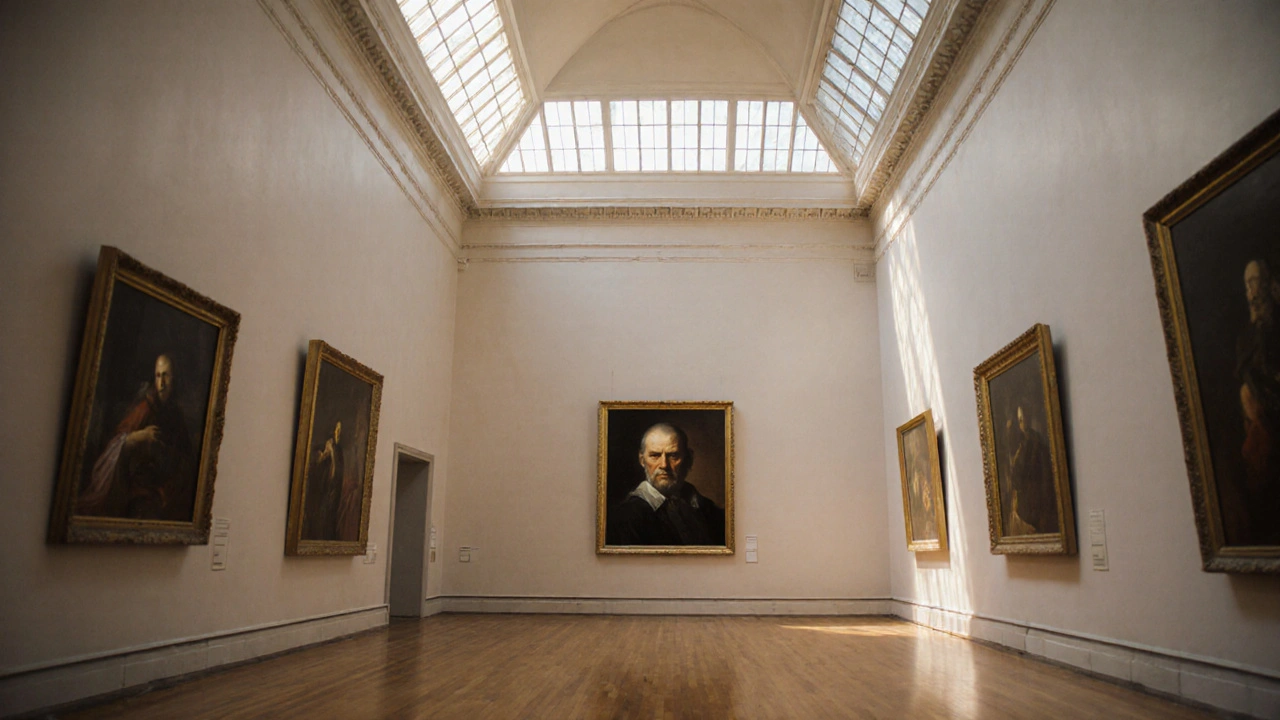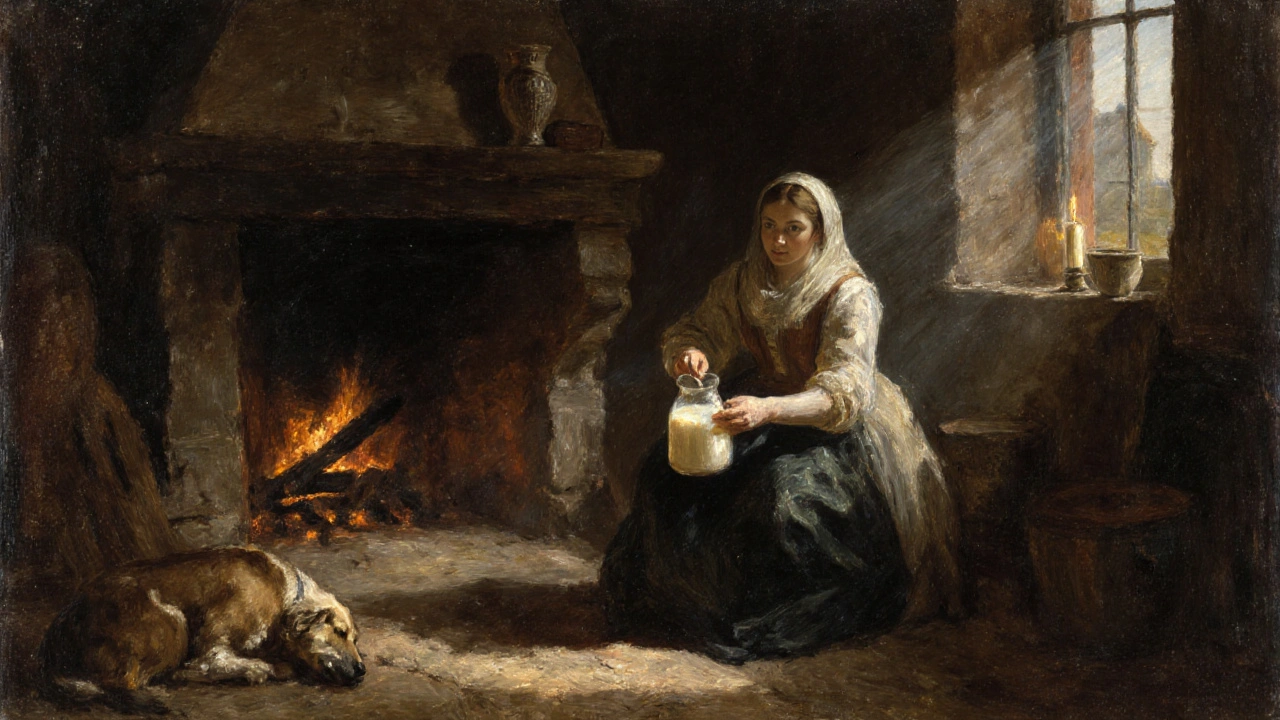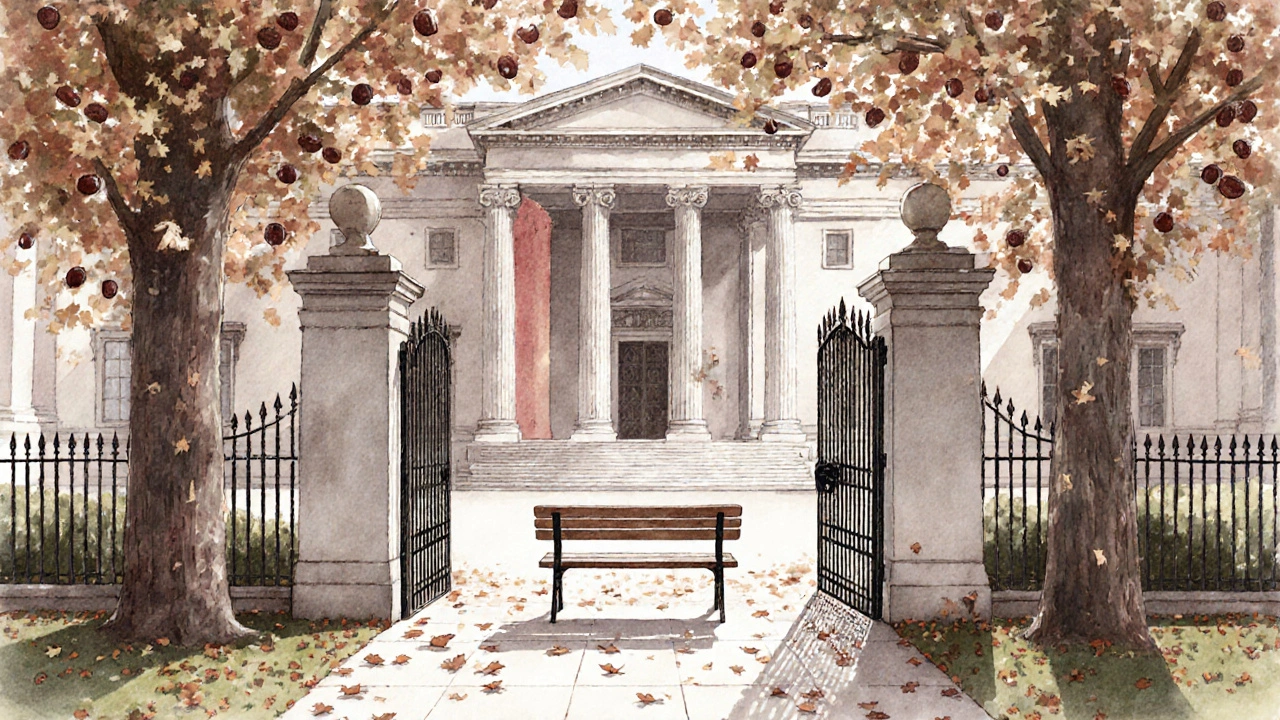
The Dulwich Picture Gallery isn’t just another art space tucked into a quiet corner of South London. It’s the oldest public art gallery in England, opened in 1817, and it still holds its original collection exactly as it was meant to be seen. No flashy renovations. No corporate sponsorships cluttering the walls. Just over 400 paintings, mostly from the 16th to 18th centuries, arranged the way the founder, Sir John Soane, intended - quiet, thoughtful, and deeply personal.
How It All Began
It started with a will. In 1811, a wealthy art collector named Sir Francis Bourgeois died and left his entire collection - 137 paintings - to the people of London. He didn’t want it locked away in a private mansion. He wanted it open to the public, free of charge. He even left money to build a proper home for it. That’s when architect Sir John Soane, known for his neoclassical designs, stepped in. He didn’t just build a room to hang paintings. He designed a space where light, scale, and order all worked together to let the art breathe. The result? A building that feels more like a private chapel than a museum.
What’s remarkable is that the gallery still uses Soane’s original lighting system. No spotlights. No LED panels. Just carefully placed skylights and windows that change with the sun. On a clear winter morning, the light hits a Rembrandt portrait just right - soft, golden, and almost sacred. That’s not an accident. That’s intention.
The Core Collection: Old Masters, Not Just Old Paintings
The gallery’s permanent collection is a quiet powerhouse. You won’t find Picasso or Warhol here. Instead, you’ll find Old Master paintings - the kind that shaped Western art. Rubens’ dramatic mythological scenes. Claude Lorrain’s dreamy landscapes. Poussin’s calm, ordered compositions. And yes, there’s a Rembrandt - Portrait of a Man - painted in 1657. It’s not his most famous work, but it’s one of the most human. The man’s eyes look right at you, tired but awake, like he’s seen too much and still has something to say.
There’s also a rare group of 17th-century Dutch and Flemish works. Not the big, flashy ones you see in the Rijksmuseum, but smaller, intimate pieces - a woman pouring milk, a dog curled by the hearth, a single candle in a dark room. These aren’t just paintings. They’re snapshots of daily life from 400 years ago. You can almost smell the bread baking.
The collection includes works by artists who were famous in their time but faded from public memory - artists like Gerard Dou, Adriaen van der Werff, and Jan Victors. The gallery doesn’t just display them. It explains why they mattered. A label might tell you that Van der Werff’s portraits were so lifelike, royalty paid double for them. That kind of detail turns a painting into a story.
Exhibitions That Feel Personal
While the permanent collection is the heart of the gallery, the temporary exhibitions are where it surprises you. Unlike big institutions that chase blockbuster names, Dulwich picks themes that feel intimate, sometimes even quirky. Last year, they showed Women Artists of the Dutch Golden Age - not just Rembrandt’s students, but women like Judith Leyster and Maria van Oosterwijck, who painted flowers and still lifes with a quiet rebellion. Their work wasn’t just decorative. It was a statement.
In 2024, they hosted an exhibition called Art and the Alchemist, linking 17th-century paintings to early scientific illustrations. You’d see a still life with a glass globe next to a copperplate engraving of a chemical apparatus. The connection? Both were trying to capture the unseen - light, transformation, hidden truths. It wasn’t a typical art show. It was a conversation across disciplines.
These exhibitions don’t come with audio guides that talk over you. They come with short, thoughtful texts printed on thick paper, placed near the paintings. You read them slowly. You sit on the wooden bench. You let the images sink in. There’s no rush. No crowds. No selfie sticks.

Why It Still Matters Today
In a world where museums compete for Instagram likes, Dulwich Picture Gallery does the opposite. It asks you to slow down. To look. To wonder. There’s no gift shop stuffed with overpriced mugs. There’s a small café with tea served in real porcelain cups, and a garden with benches under chestnut trees. You can sit there after your visit and think about what you saw.
It’s not about having the most famous paintings. It’s about having the right ones. The gallery doesn’t need to boast. It doesn’t need to be loud. It just needs to be true to its purpose: to let art speak for itself, without interference.
That’s why people come back. Not for the Instagram shot. Not for the free entry (though it’s free for everyone, always). But because it feels like a secret. A quiet, beautiful, carefully kept secret.
What to See First
If you’ve only got an hour, start with the main gallery room. Walk in slowly. Let your eyes adjust. Look left - that’s the Rubens. Then right - the Poussin. Then center - the Rembrandt. Don’t rush. Stand in front of each one for two full minutes. Notice how the brushstrokes change. How the shadows fall. How the light moves across the canvas.
Then head to the Dutch room. Find the painting of the woman with the milk jug. Look at her hands. Look at the way the light catches the edge of the jug. That’s not just technique. That’s observation. That’s the soul of the gallery.
Don’t skip the garden. It’s small, but it’s the perfect place to end. You’ll find a bench near the wall where the original 1817 iron gates still stand. Sit there. Look back at the building. Think about how much has changed since 1817 - wars, revolutions, smartphones - and yet, this place hasn’t changed at all. And that’s the point.

Planning Your Visit
Open Tuesday to Sunday, 10 a.m. to 5 p.m. Closed Mondays. Free admission, always. No need to book, though it helps during holiday weekends. The nearest tube is Dulwich Village on the Overground - a 10-minute walk. Buses 197, 312, and 424 stop nearby.
There’s no parking on-site, but paid street parking is available on Dulwich Common. Avoid weekends if you want space to breathe. Weekday afternoons are quietest.
Bring a notebook. Or just bring your eyes. The gallery doesn’t allow flash photography, but you’re welcome to sketch. Many visitors do. There’s a quiet dignity here that invites reflection, not just consumption.
Is the Dulwich Picture Gallery free to enter?
Yes, entry to the Dulwich Picture Gallery is always free for everyone. There’s no charge for the permanent collection or temporary exhibitions. Donations are welcome but never required.
What’s the oldest painting in the collection?
The oldest painting in the collection is a 15th-century Italian panel by the workshop of Duccio di Buoninsegna, dating to around 1310. It’s a small religious scene, painted in tempera on wood, and it’s displayed in the earliest section of the gallery. It’s not flashy, but it’s the foundation of the collection’s historical depth.
Can I take photos inside the gallery?
You can take photos without flash for personal use. Tripods, selfie sticks, and professional equipment are not allowed. The gallery asks visitors to respect the quiet atmosphere - no phone calls, no loud conversations near the paintings.
Are there guided tours available?
Yes, free guided tours run daily at 2 p.m. They last about 45 minutes and focus on the permanent collection. No booking is needed - just arrive 10 minutes early at the main desk. There are also themed tours during special exhibitions, which are listed on the gallery’s website.
Is the gallery accessible for visitors with mobility issues?
The main gallery is fully accessible with ramps and elevators. The original 1817 building has some narrow doorways and low ceilings, but staff can guide you through alternative routes. Wheelchairs are available on request, and there’s a dedicated accessible toilet. The garden and café are also fully accessible.
What Comes Next
If you leave Dulwich Picture Gallery feeling like you’ve seen something rare, you’re right. It’s not the biggest gallery in London. It’s not the most famous. But it’s one of the most honest. In a world of curated feeds and algorithm-driven experiences, it offers something harder to find: stillness. Art, presented without noise, without hype, without pressure. Just the quiet truth of what people made centuries ago - and why it still matters today.
Next time you’re in London, skip the crowds at the National Gallery. Walk down to Dulwich. Sit. Look. Listen. The paintings have been waiting for you.